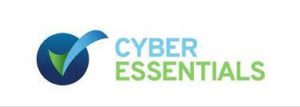
by Thomas Lethenborg | Apr 8, 2021 | News
Copenhagen, Denmark – 8th of April 2021.
Monsenso A/S, a technology leader in digital health solutions for mental health is now Cyber Essentials certified.
The Monsenso digital health solution that connects individuals and clinicians to provide optimal care received a Cyber Essentials certification demonstrating the company’s commitment to security and data protection.
Cyber Essentials is the UK Government’s answer to a safer internet space for organisations of all sizes, across all sectors. Developed and operated by the National Cyber Security Centre (NCSC), the Cyber Essentials certificate assures that essential cyber security measures are in place to protect data against cyber-attacks.
“Monsenso is committed to adhere to the highest security standards. Beyond the Cyber Essentials certification, Monsenso holds the ISO 13485 and ISO 27001 certifications, a TGA certification, class 1 CE mark and is HIPAA compliant. The Cyber Essentials certification demonstrates our continuous commitment to keep the data of our customers secure” says Thomas Lethenborg, CEO at Monsenso.

To read more about our data protection, download our Data management & Security fact sheet.
About Monsenso
Monsenso is an innovative technology company offering a digital health solution used for decentralised trials, remote patient monitoring and treatment support. Our mission is to contribute to improved health for more people at lower costs by supporting treatment digitally and leveraging patient-reported outcomes data. Our solution helps optimise the treatment and gives a detailed overview of an individual’s health through the collection of outcome, adherence, and behavioural data. It connects individuals, carers, and health care providers to enable personalised treatment, remote care, and early intervention. We collaborate with health and social care, pharmaceuticals, and leading researcher worldwide in our endeavours to deliver solutions that fit into the life of patients and health care professionals. To learn more visit www.monsenso.com.
For additional information contact:
Bettina van Wylich-Muxoll
Chief Marketing Officer
Monsenso
+45 22 70 47 24
marketing@monsenso.com

by Thomas Lethenborg | May 5, 2017 | Blog
Using Remote Patient Monitoring tools for children is important to roll-out digital healthcare technologies in a larger scale.
Remote patient monitoring tools help deliver health services to patients outside of a conventional care setting by connecting patients and healthcare providers through technology. Mobile health (mHealth) applications can collect medical data such as vital signs, weight, blood pressure, blood sugar, blood oxygen levels, heart rate, and electrocardiograms. [1] [2]
In general, children and adolescents can be more open to technology than adults, therefore a digital health solution is more likely to appeal to them. The main characteristic shared by the post-millennial generation (people born after the 90’s) is their widespread use of internet and technology since they were toddlers.
To improve people’s lifestyles and the healthcare system, remote patient monitoring technology should be prioritised. By using today’s technology, individuals can learn to improve their health and the healthcare systems can overcome the new obstacles being faced every day.
Remote Patient Monitoring
Monitoring applications can collect a broad range of health data which is then transmitted to health professionals in facilities such as monitoring centres, hospitals and intensive care units, skilled nursing facilities, and centralised off-site case management programs. Health professionals monitor these patients remotely and act on the information received as part of the treatment plan. [2]
Monitoring systems can provide a more patient-centric treatment, decrease costs, improve outcomes and enable remote care. While there are clearly many benefits to remote patient monitoring, the issue of engagement remains the same. Patients need time to learn about new technologies in order to feel comfortable using them on a daily basis. [4] [3]
For this reason, using remote patient monitoring in children is so powerful. Young generations have an innate sense of technology, whereas the elderly are still reserved in using technology for health purposes. Besides, by using this type of system in children, parents are also being engaged at the same time since most parents are very engaged in their child’s health, which provides a tremendous opportunity for healthcare systems. [3]
Introducing new technologies can be challenging since all stakeholders need to be on board and must be comfortable using the system, therefore hospitals and healthcare systems need to find easy-to-use solutions that easily fit into the users’ lives. For example, the Monsenso mHealth platform for mental health can help a child or adolescent with a mental or behavioural health issue to keep track of their mood and symptoms. It can also notify their carer and healthcare provider when the user is displaying triggers or warnings signs so they can receive the help they need. A teacher or a school counsellor can also be asked to provide feedback of the students that are struggling with their mental health, in this way, children and adolescents can feel supported and cared for.
Old habits are hard to overcome, which is why the best way of incorporating new technologies is to appeal to today’s children, who will introduce the technology to their elders and share it with future generations. MHealth solutions can help societies succeed in an era of individualised healthcare, where patients are empowered to help manage their own care.
References:
[1] Remote Patient Monitoring. Canada Health Infoway.
https://www.infoway-inforoute.ca/en/solutions/consumer-e-services/remote-patient-monitoring
[2] Remote Patient Monitoring. Center for Connected Health Policy
http://cchpca.org/remote-patient-monitoring
[3] Should we be looking at children to learn about remote patient monitoring? Smartphone Healthcare.
http://www.smartphonehc.com/2016/02/24/should-we-be-looking-to-children-to-learn-about-remote-patient-monitoring/
[4] Remote Patient Monitoring (RPM) – Security and Other Adoption Barriers. HIMSS mHealth Community. 2015
http://www.himss.org/ResourceLibrary/genResourceFAQ.aspx?ItemNumber=36893



